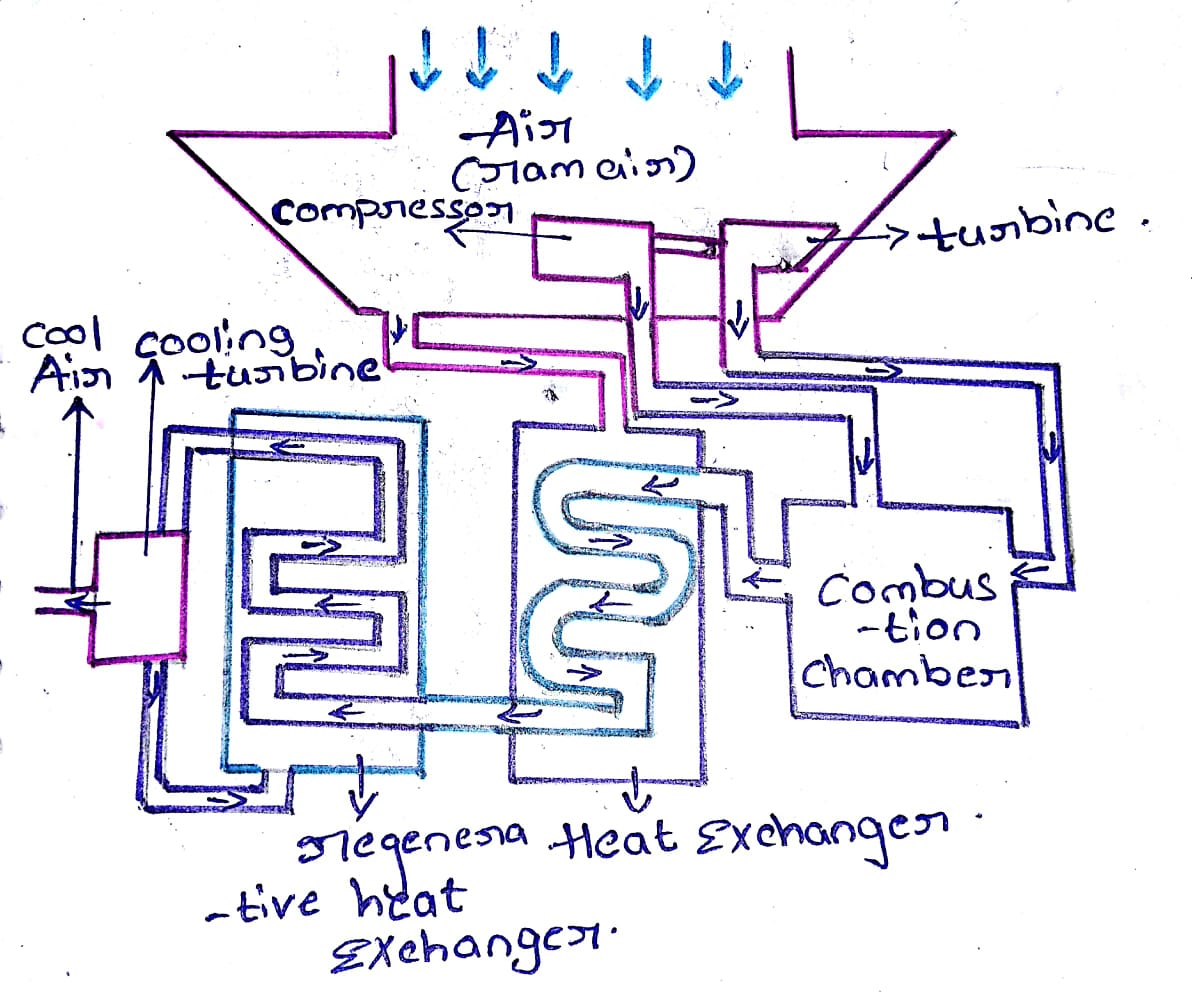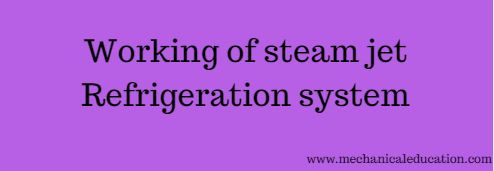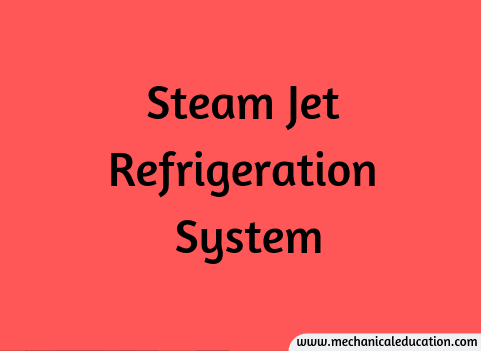What is Forced Draft Cooling Towers?
Forced draft cooling towers are a type of mechanical draft cooling tower that actively forces or pushes air into the tower to enhance the natural convection process and facilitate efficient heat exchange. These towers play a crucial role in various industrial applications where precise temperature control and adaptability to variable heat loads are essential. The forced draft design distinguishes them from induced draft and natural draft cooling towers.
Key Features of Forced Draft Cooling Towers:
- Mechanical Fans:
- The defining feature of forced draft cooling towers is the presence of mechanical fans positioned at the air inlet. These fans actively create a positive pressure inside the tower, driving external air into the structure.
- Positive Air Pressure:
- The forced draft configuration results in positive air pressure within the tower. As the fans push ambient air through the tower, it enhances the convective heat exchange process, optimizing cooling efficiency.
- Air Inlet Design:
- The air inlet design is strategically located to accommodate the forced airflow. This design allows for controlled air distribution over the water distribution system and fill media, promoting effective heat transfer.
- Water Distribution System:
- Hot water from industrial processes is distributed over the fill media within the tower. The forced airflow enhances the evaporation of a portion of this water, leading to the extraction of heat and subsequent cooling.
- Efficient Heat Exchange:
- The combination of mechanical fans, positive air pressure, and water distribution system results in efficient heat exchange. Forced draft cooling towers are designed to achieve optimal cooling performance in a variety of operating conditions.
- Adaptability to Variable Heat Loads:
- One of the advantages of forced draft cooling towers is their adaptability to variable heat loads. By adjusting the speed of the fans or incorporating multiple fans, these towers can efficiently dissipate heat under changing operational conditions.
- Control Over Airflow Patterns:
- The placement and control of mechanical fans provide a degree of control over airflow patterns. This control helps prevent the recirculation of warm air, ensuring that the heat dissipation process is optimized.
- Applications:
- Forced draft cooling towers find applications in industries such as power generation, manufacturing, chemical processing, and HVAC systems. Their adaptability, efficiency, and controlled cooling make them suitable for various industrial processes.
- Space Considerations:
- Forced draft cooling towers can be designed with a more compact footprint compared to some natural draft towers. This makes them suitable for installations where space constraints or existing structures need to be taken into account.
- Energy Consumption:
- While forced draft cooling towers enhance cooling efficiency, they require electrical energy to operate the mechanical fans. The energy consumption is an important consideration in the overall operational costs.
In summary, forced draft cooling towers are engineered to actively control and enhance the airflow within the tower, ensuring efficient heat exchange and providing a versatile solution for industries requiring reliable and adaptable cooling systems.
Working Of Forced Draft Cooling Tower?
The working of a forced draft cooling tower involves a systematic process of heat dissipation facilitated by the active use of mechanical fans. Positioned at the base or air inlet of the tower, these fans play a crucial role in enhancing the natural convection process. As the mechanical fans rotate, they force or push ambient air into the cooling tower, creating positive air pressure within the structure. This forced airflow is directed over the water distribution system and fill media, where it comes into contact with hot water from industrial processes. The water, distributed over the fill media, experiences evaporation due to the forced airflow, leading to the extraction of heat. The warm, moist air resulting from this process exits the top of the cooling tower. The remaining cooled water collects at the bottom and can be recirculated for further heat exchange. The forced draft design ensures a continuous and controlled flow of air, optimizing the heat transfer efficiency and allowing for adaptability to variable heat loads. Overall, forced draft cooling towers are essential in maintaining optimal temperatures in various industrial applications, contributing to the efficiency and reliability of industrial processes.
Advantages of Forced Draft Cooling Towers
Forced draft cooling towers offer several advantages in industrial applications where efficient heat dissipation is essential. Here are some of the key advantages of forced draft cooling towers:
- Enhanced Heat Transfer:
- The active use of mechanical fans creates positive air pressure, ensuring a continuous flow of air through the tower. This enhances the heat transfer process, resulting in efficient cooling of hot water.
- Adaptability to Variable Heat Loads:
- Forced draft cooling towers are highly adaptable to changing heat loads. The speed of the mechanical fans can be adjusted or multiple fans can be used to efficiently dissipate heat under varying operational conditions.
- Control Over Airflow Patterns:
- The strategic placement of mechanical fans allows for precise control over airflow patterns within the tower. This control minimizes the risk of recirculation of warm air, optimizing the heat dissipation process.
- Compact Design:
- Forced draft cooling towers can be designed with a more compact footprint compared to some natural draft towers. This makes them suitable for installations where space constraints or existing structures need to be considered.
- Quick Response to Operational Changes:
- The adaptability of forced draft cooling towers allows for a quick response to changes in operational conditions. Adjusting the fan speed enables rapid adaptation to variations in heat load.
- Efficient in High Ambient Temperatures:
- Forced draft cooling towers are effective even in high ambient temperatures. The forced airflow helps overcome external factors that might otherwise impede natural convection in hot weather.
- Energy Efficiency with Variable Speed Fans:
- Variable speed fans can be employed in forced draft cooling towers, contributing to energy efficiency. The ability to adjust fan speed based on the heat load optimizes energy consumption.
- Optimized Heat Dissipation:
- The combination of forced airflow, water distribution systems, and evaporative cooling ensures optimized heat dissipation. This results in the efficient cooling of hot water circulating in industrial processes.
- Suitable for Various Industrial Applications:
- Forced draft cooling towers find applications in diverse industries, including power generation, chemical processing, manufacturing, and HVAC systems. Their adaptability and efficiency make them versatile for different industrial processes.
- Improved Control Over Cooling Process:
- The active role of mechanical fans provides improved control over the cooling process. This control is beneficial for maintaining precise temperatures in industrial applications where temperature regulation is critical.
- Less Sensitive to Wind Direction:
- Forced draft cooling towers are generally less sensitive to wind direction compared to natural draft towers. This reduces the likelihood of performance variations due to changing wind patterns.
Forced draft cooling towers, with their ability to efficiently dissipate heat, adapt to variable loads, and provide control over the cooling process, are favored in industrial settings where reliable and effective cooling systems are essential.
Disadvantages of Forced Draft Cooling Towers
While forced draft cooling towers offer several advantages, there are also some disadvantages associated with their use in industrial applications. Here are some key drawbacks:
- Energy Consumption:
- The operation of mechanical fans in forced draft cooling towers requires electrical energy. The energy consumption can be significant, contributing to overall operational costs.
- Noise Generation:
- Mechanical fans can generate noise during operation, which may be a concern in certain environments. The noise level can vary based on factors such as fan design, speed, and tower configuration.
- Visual Impact:
- The presence of mechanical fans and associated structures may have a visual impact on the surrounding landscape. This can be a consideration in areas where aesthetics and visual harmony are important.
- Maintenance Complexity:
- Forced draft cooling towers involve the maintenance of mechanical components, including fans and motors. Accessing and maintaining these components at elevated heights can be more complex and may require specialized equipment.
- Potential for Fan Failure:
- The presence of mechanical components introduces the possibility of fan failure. While redundancy measures can be implemented, addressing fan malfunctions may still lead to downtime and require prompt maintenance.
- Dependency on Electrical Supply:
- Forced draft cooling towers are dependent on a stable electrical supply. Any disruptions to the power source can affect their operation, potentially impacting the cooling process and overall system reliability.
- Initial Installation Costs:
- The initial installation costs of forced draft cooling towers, including the purchase of fans, motors, and associated systems, can be higher compared to certain natural draft designs. However, long-term operational benefits may offset these upfront costs.
- Environmental Impact During Construction:
- The construction of forced draft cooling towers may have environmental implications, particularly during the installation phase. Disturbances related to construction activities can impact local ecosystems and communities.
- Complexity in Integration:
- Integrating forced draft cooling towers into existing facilities or retrofitting them may be more complex due to the need to accommodate mechanical components, structural considerations, and potential modifications.
- Requirement for Skilled Maintenance Personnel:
- Maintenance of forced draft cooling towers may require skilled personnel with expertise in handling mechanical systems. This specialization can contribute to higher maintenance costs.
- Air Quality Considerations:
- The forced airflow in these towers can potentially impact local air quality by dispersing particulate matter or emissions from the industrial processes being cooled.
It’s important to note that the selection between forced draft and other cooling tower types depends on specific application requirements, environmental considerations, and the desired level of control over the cooling process. Each type has its own set of advantages and challenges.
Applications Of Forced Draft Cooling Tower
Forced draft cooling towers find applications in various industrial processes where efficient heat dissipation is crucial. Their ability to actively force air through the tower, enhancing the heat exchange process, makes them suitable for a range of applications. Here are some common applications of forced draft cooling towers:
- Power Generation Plants:
- Forced draft cooling towers are extensively used in power plants to cool the hot water generated during the electricity generation process. They play a vital role in maintaining the efficiency of power plants by dissipating excess heat from condensers and other equipment.
- Chemical Processing Industries:
- Chemical manufacturing processes often generate substantial amounts of heat. Forced draft cooling towers help cool the process water used in these industries, ensuring the safe and efficient operation of various chemical processes.
- Petrochemical Refineries:
- Petrochemical refineries use forced draft cooling towers to cool water used in various refining processes. These towers contribute to the overall efficiency of the refining operations by preventing equipment overheating.
- Manufacturing Facilities:
- Manufacturing processes, especially those involving heavy machinery, can generate heat that needs to be dissipated. Forced draft cooling towers are employed in manufacturing facilities to cool the water used in industrial processes, ensuring optimal equipment performance.
- HVAC Systems:
- Forced draft cooling towers are used in heating, ventilation, and air conditioning (HVAC) systems for commercial and industrial buildings. They help regulate the temperature of the chilled water used in air conditioning systems.
- Plastics and Rubber Industries:
- Industries involved in the production of plastics and rubber often use forced draft cooling towers to cool the water used in manufacturing processes. This is crucial for maintaining the quality and consistency of the final products.
- Food and Beverage Processing:
- Forced draft cooling towers are employed in the food and beverage industry to cool water used in various processing stages. This includes applications such as cooling water for machinery or temperature control in food production.
- Data Centers:
- Data centers, which generate significant heat due to the operation of computer servers, use forced draft cooling towers to cool the water used in their cooling systems. Efficient heat dissipation is essential for preventing equipment overheating in these facilities.
- Metal and Steel Industries:
- Metal processing and steel manufacturing involve high-temperature processes. Forced draft cooling towers help cool the water used in cooling applications, contributing to the overall efficiency and safety of these industrial operations.
- Textile Industry:
- In the textile industry, forced draft cooling towers are employed to cool water used in various stages of textile manufacturing. This includes cooling water for machinery and temperature control in dyeing processes.
- Paper and Pulp Mills:
- Paper and pulp manufacturing involve processes that generate heat. Forced draft cooling towers assist in cooling the water used in these processes, contributing to the efficient production of paper and pulp products.
The versatility of forced draft cooling towers makes them valuable in industries where precise temperature control, adaptability to variable heat loads, and efficient heat dissipation are essential for operational success.
Types of Forced Draft Cooling Tower
Forced draft cooling towers come in various types, each designed to meet specific industrial requirements and operational needs. The primary distinction among these types lies in the arrangement and configuration of the mechanical fans.
Here are some common types of forced draft cooling towers:
- Single Fan Forced Draft Cooling Tower:
- This type features a single mechanical fan positioned at the air inlet. It is suitable for smaller-scale applications where a single fan provides sufficient airflow for efficient heat dissipation.
- Multi-Fan Forced Draft Cooling Tower:
- In larger industrial settings, multi-fan forced draft cooling towers are employed. Multiple mechanical fans are arranged to enhance the overall airflow and cooling capacity. This type is more adaptable to higher heat loads.
- Centrally Located Fan Forced Draft Cooling Tower:
- The fans in this configuration are centrally located within the tower structure. This design allows for an even distribution of forced airflow across the fill media and water distribution system.
- Perimeter Located Fan Forced Draft Cooling Tower:
- In this design, the mechanical fans are positioned along the perimeter of the cooling tower. This arrangement can provide more flexibility in terms of tower layout and space utilization.
- High Plume Forced Draft Cooling Tower:
- High plume forced draft cooling towers are designed to discharge the warm, moist air at a higher elevation. This helps minimize the impact of the warm air on the surrounding environment. They are often used in urban areas with space constraints.
- Low Noise Forced Draft Cooling Tower:
- Specialized forced draft cooling towers with noise reduction features are designed for applications where minimizing noise is a priority. These may include installations in residential or noise-sensitive areas.
- Crossflow Forced Draft Cooling Tower:
- In crossflow forced draft cooling towers, the forced air flows horizontally across the downward-falling water. This design is known for its efficiency and even air distribution over the fill media.
- Counterflow Forced Draft Cooling Tower:
- Counterflow forced draft cooling towers have the forced air flowing vertically upward against the downward-falling water. This design maximizes the contact between air and water, enhancing heat transfer efficiency.
- Induced Draft and Forced Draft Hybrid Cooling Tower:
- Some cooling towers combine both forced draft and induced draft configurations, leveraging the advantages of each. Hybrid designs aim to optimize performance and efficiency in specific applications.
- Single Cell and Multi-Cell Forced Draft Cooling Towers:
- Forced draft cooling towers can be categorized based on the number of cells. Single-cell towers have one central structure, while multi-cell towers consist of interconnected units. Multi-cell configurations offer scalability and redundancy.
The choice of the forced draft cooling tower type depends on factors such as the heat load, available space, noise considerations, and specific industrial requirements. Each type is engineered to provide effective heat dissipation while addressing the unique challenges of different applications.
Frequently Asked Questions -FAQ’s
What are the advantages of forced draft cooling towers, and why are they preferred in certain applications?
The advantages include enhanced heat transfer, adaptability to variable heat loads, controlled airflow patterns, and suitability for various industrial processes. These features make forced draft cooling towers preferred in applications where precise temperature control and efficient heat dissipation are crucial.
Can forced draft cooling towers be customized for specific industrial requirements?
Yes, forced draft cooling towers can be customized based on specific project requirements, including fan configurations, materials, and design variations to meet diverse industrial needs.
How does the noise level of forced draft cooling towers compare to other types?
The noise level can vary based on factors such as fan design, speed, and tower configuration. Specialized low-noise forced draft cooling towers are available for applications where minimizing noise is a priority.
Are forced draft cooling towers suitable for applications with limited space?
Yes, forced draft cooling towers can be designed with a more compact footprint, making them suitable for installations with limited space or within existing structures.
What is the significance of positive air pressure in a forced draft cooling tower?
Positive air pressure, created by the mechanical fans, ensures a continuous and controlled flow of air through the tower. This enhances the overall heat exchange process, contributing to the tower’s efficiency.
How does a forced draft cooling tower adapt to variable heat loads in industrial processes?
Forced draft cooling towers can adapt to changing heat loads by adjusting the speed of the mechanical fans or utilizing multiple fans. This adaptability ensures efficient heat dissipation under varying operational conditions.
What types of industries commonly use forced draft cooling towers?
Forced draft cooling towers are utilized in various industries, including power generation, chemical processing, manufacturing, HVAC systems, and others. Their adaptability and efficiency make them suitable for diverse industrial processes.
How does a forced draft cooling tower achieve efficient heat dissipation?
The forced airflow induced by mechanical fans promotes the evaporation of water over the fill media. This evaporation extracts heat from the circulating hot water, leading to efficient heat dissipation and cooling.
What is a forced draft cooling tower, and how does it differ from other cooling tower types?
A forced draft cooling tower is a type of mechanical draft cooling tower that employs mechanical fans positioned at the air inlet to actively force air through the tower. This design enhances heat exchange efficiency and distinguishes it from induced draft and natural draft cooling towers.



